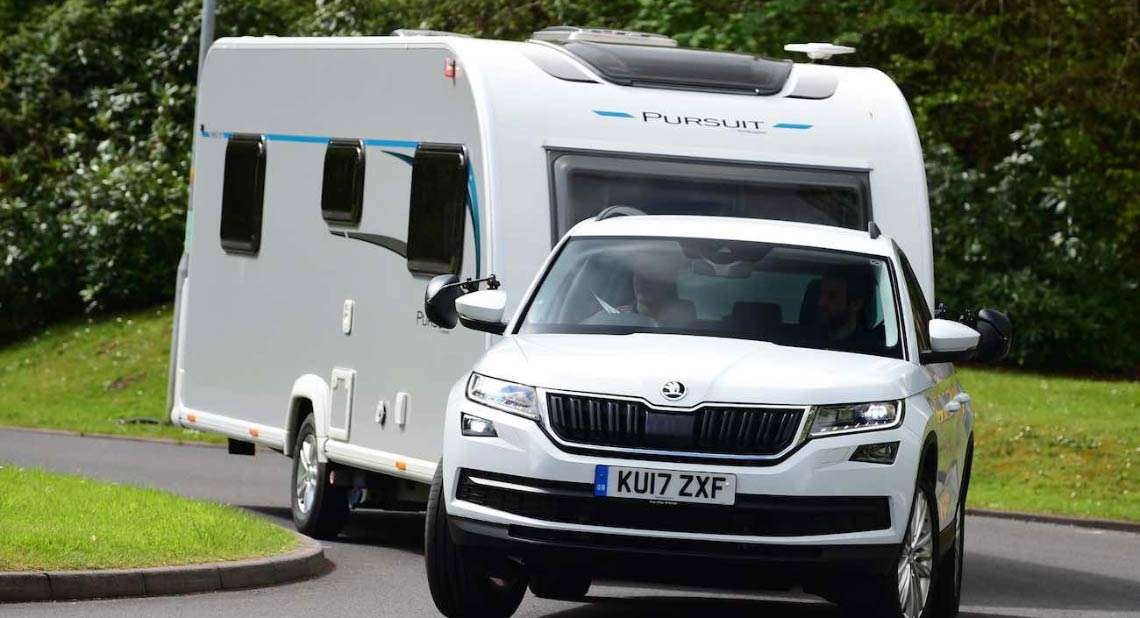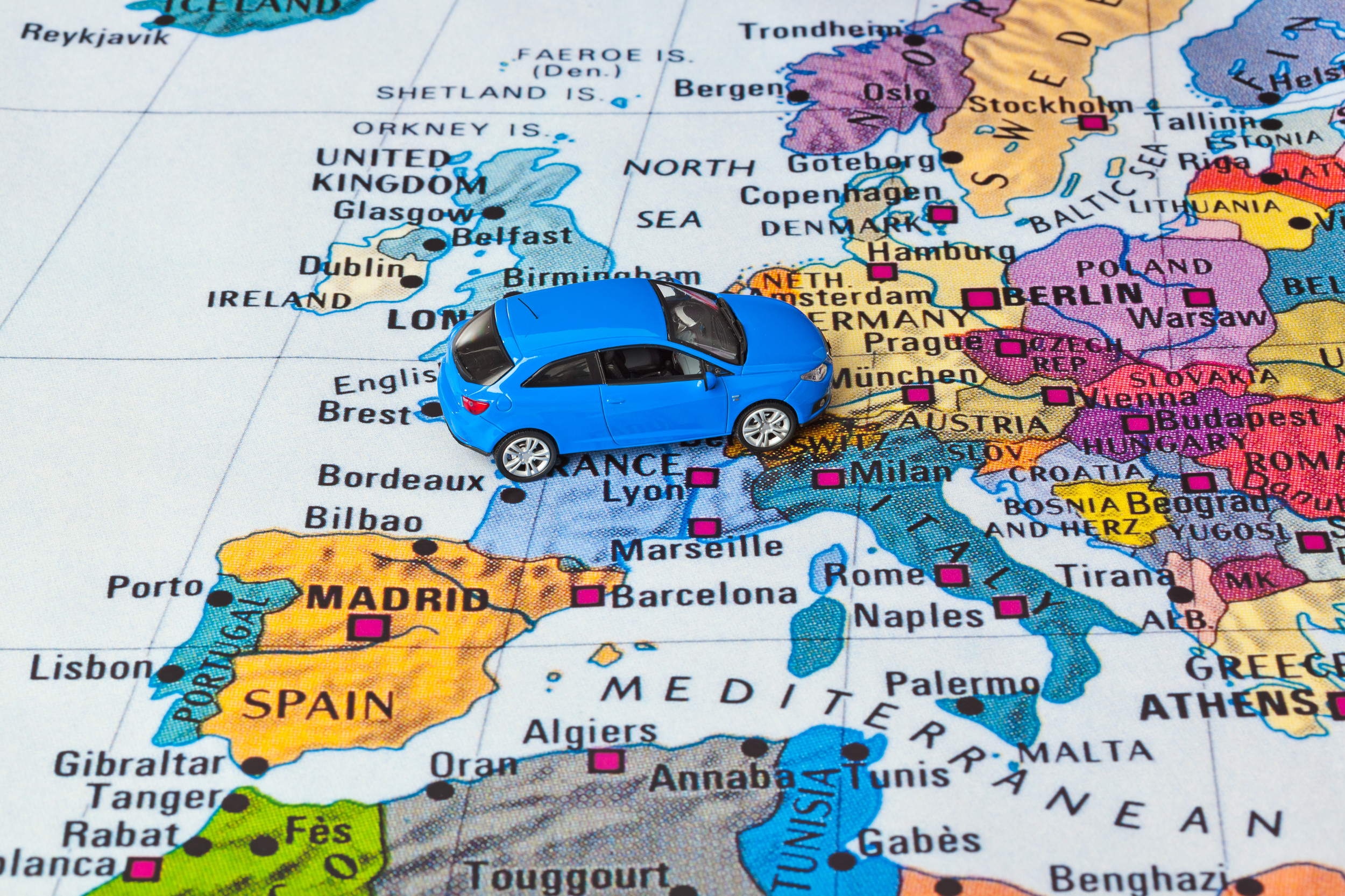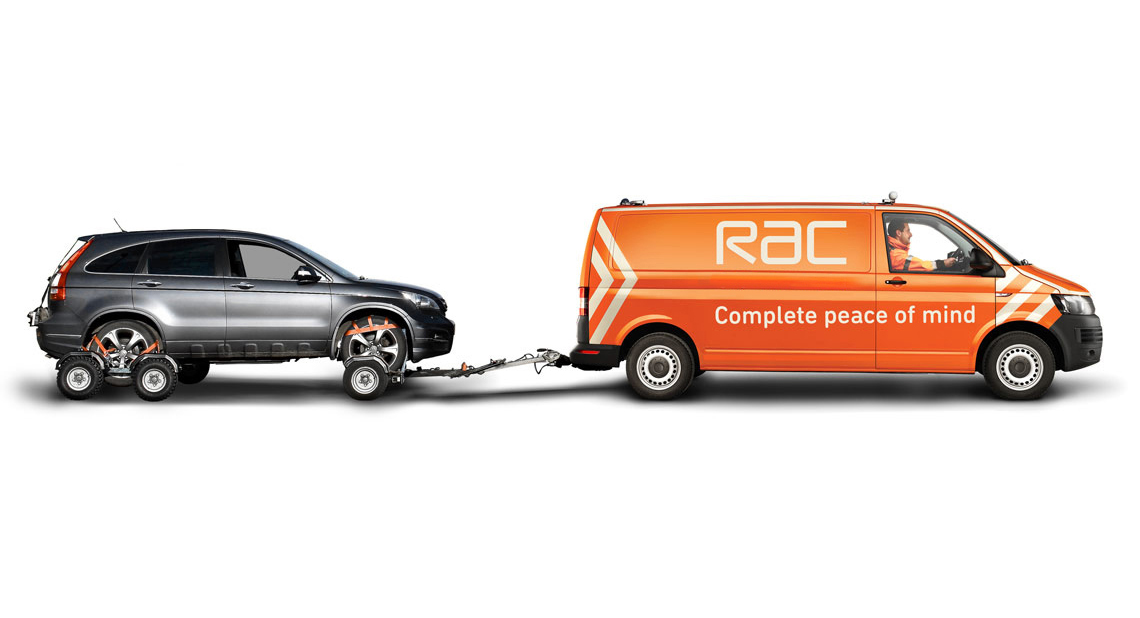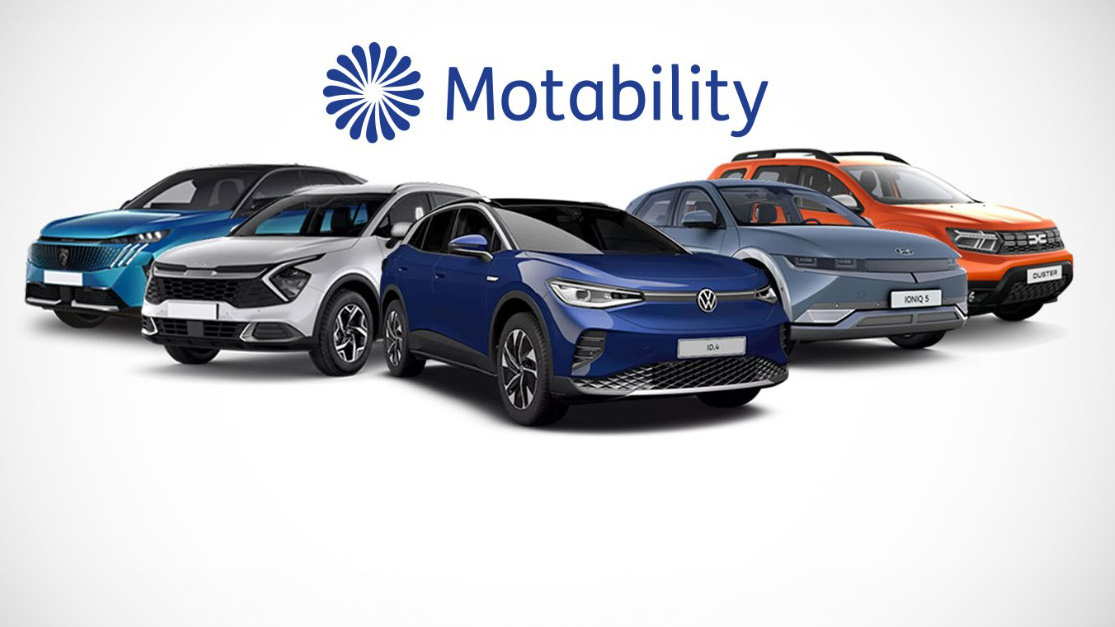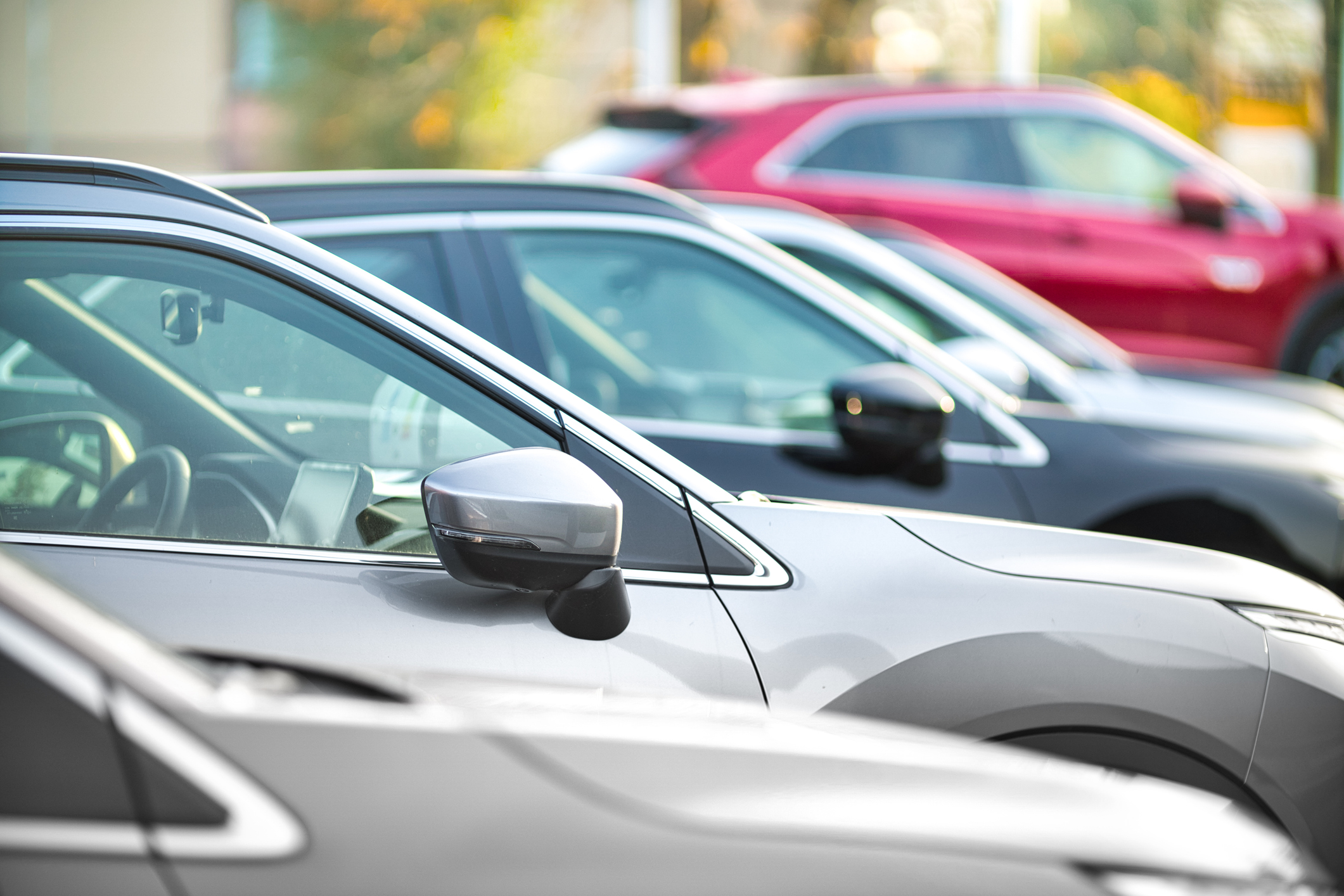Whether it’s to tow a caravan or a small boat, this guide from Car Buyer highlights a few things you need to consider before setting off on your journey.
Many of us need to tow something behind our cars at some point, and whether it’s a caravan, horsebox, small trailer or a boat there are many things that need to be considered before doing so.
It’s not simply a case of buying a car with a tow bar, or having one fitted to your current vehicle, hitching up and setting off; there are several laws you need to be aware of and adhere to. It’s also important to learn how best to manoeuvre your vehicle with a trailer attached.
Read on for our complete guide to towing in the UK.
Licences for towing: what can you drive?
In order to drive a vehicle that’s to be used for towing on the public highway you need to have a driving licence. What you can legally tow will depend on when you passed your driving test.
Driving test passed pre-1997
If you passed your driving test prior to 1997, your licence entitles you to drive a vehicle and trailer with a Maximum Authorised Mass (MAM) of 8.25 tonnes. The MAM is the combined weight of the vehicle being used to tow and the weight of the trailer being towed, along with the weight of the contents of the trailer. This will certainly suffice for the vast majority of recreational uses and would even allow you to tow something relatively light (up to three-quarters of a tonne) behind a 7.5-tonne truck.
Driving test passed 1997 or later
The MAM you can tow if you passed your driving test after 1 January 1997 is significantly reduced, dropping to 3.5 tonnes. However, if the towing vehicle has a weight of 3.5 tonnes the MAM limit is increased to 4.25 tonnes, effectively meaning that you could tow a three-quarter tonne trailer with a 3.5-tonne vehicle. A further complication is that the trailer’s MAM must be lower than the towing vehicle’s weight, but in practice most towing vehicles will be heavier than the trailer anyway.
Can your towing licence be upgraded?
If you fall into the 1997 or after category the good news is that you can upgrade your towing licence via an additional test run through DVSA bus and lorry test centres. The bad news is that it will cost you £115 to take the car and trailer driving test if you take the test on a weekday, or £141 for an evening, weekend or bank holiday appointment.
Whether you want to have any training or lessons before you take the test is up to you – there’s no legal obligation to do so – but if you do have some professional training you could end up spending £500-£600 for the privilege.
Towing and trailer regulations in the UK
As with driving any form of vehicle on the public highway, there are a number of legal requirements to which you have to adhere. We’ve listed them below:
- Trailer dimensions: The maximum width of a trailer you can tow in the UK – irrespective of the towing vehicle – is 2.55 metres, while the maximum length of a trailer being towed by a sub-3.5-tonne vehicle is seven metres, although that latter figure does not need to include an A frame if you are towing with one.
- Tow bar: Assuming the vehicle you’re towing with was manufactured and fitted with a tow bar post-1998, then the tow bar will need to have Type Approval and meet EU regulations. This will be clearly marked on the tow bar, either with a label or a plate with an approval number.
- Mirrors: If you are towing a trailer or caravan that is wider than your car then you will need to fit additional mirrors as it is an offense not to have an adequate view of the road behind you. Extendable mirrors can be fitted to your door mirrors and failure to do so could make you liable for three points on your licence and a fine of up to £1,000.
- Trailer brakes: If whatever you are towing weighs over 750 kilos (not just the weight of the trailer, but its contents, too) then it is a legal requirement that the trailer must have its own braking system and that it must be in good order.
- Number plates: Your trailer must display a number plate if the trailer obscures the registration number of the towing vehicle. As this is almost always the case your trailer should display the same registration number as your vehicle. It needs to be made to the same specification as a car’s normal number plate – a hand-painted one will not suffice. If fitted, a number plate must be illuminated so it is visible at night.
- Lighting: A trailer must have two red sidelights, two red brake lights, amber indicators and a pair of reflective triangles affixed to its rear. If your trailer is over 1.3m wide then it will also require a fog light. At the front end of the trailer you will need a white reflector either side if the trailer was made post-1990, and if it’s over 1.6m wide it’ll need front position lights. These latter two requirements don’t apply to boat trailers.
- Secure load: It is a legal requirement that any load being carried by your trailer does not have any sharp edges that could cause injury and that it is fully secured and will not move around while being towed.
Towing capacities and weights
Before attempting to tow anything with your vehicle, you must ensure it is up to the job – its towing capacity can be found in your vehicle’s handbook. Make sure you check that the figures refer to your exact model, as the same car fitted with a different engine may have very different towing capabilities. The type of transmission your car has will also have a bearing on this, so be certain to double check the figures.
Once you have ascertained your vehicle’s capabilities, you need to know the weight of the trailer you will be towing and the load that the trailer is capable of carrying. For more recently manufactured trailers this will be written on a plate on the trailer, but if you’re using an older trailer you may have to take it to a weigh station to determine its weight.
Another thing you need to bear in mind is something called nose weight. This refers to the maximum weight that will be pushing down on your towing vehicle’s tow bar. The Caravan Club notes that ideally the trailer’s nose weight should be no more than 7% of the trailer’s overall weight, so if it’s more than this you may need to redistribute the load.
Conversely you don’t want to have too much weight at the rear of the trailer as this is likely to make it unstable and potentially dangerous. Thus, the heaviest items in your trailer should be located close to its axle. As all trailer and towing combinations will vary significantly, it’s best to get professional advice if you’re at all unsure.
Improving your towing skills
The Caravan Club, as well as caravan and trailer retailers, will all be able to advise on the most suitable towing combinations. To get the best out of caravan or trailer towing, we’d advise getting some further training, which will give you loading tips, general safety and manoeuvring skills.
Fitting a tow bar to your Motability Scheme car
You can fit a tow bar to your Motability Scheme vehicle but first, you will need to check the below requirements:
- If the warranty for the car will be affected and it is capable of towing the caravan or trailer you are wanting to tow. Your dealership will be able to advise you of this.
- Check that the driving licences of any driver cover the ability to tow. The DVLA can be contacted on 0845 402 4000 if you need to speak with them to check this.
- The tow bar must be fitted by your dealership or a VAT registered fitter, and you will be responsible for any fitting costs. You must notify our Scheme insurers RSA Motability.
- We would also recommend that additional insurance and breakdown cover are taken out for the caravan or trailer and its contents, as this is not covered under your lease agreement.
- At the end of the lease you are welcome to leave the tow bar on the vehicle. Alternatively, you are able to have this removed, however this would be at your own cost and you would be responsible if any damage were to be caused.
This article was written by Carbuyer from Car Buyer and was legally licensed through the NewsCred publisher network. Please direct all licensing questions to legal@newscred.com.
Related articles
The best accessible caravanning spots in the UK
How to plan an accessible holiday
How fast can you drive in Europe?
![]()
